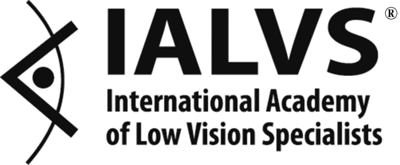
Maintaining independence and quality of life is key for individuals with low vision.
As members of The International Academy of Low Vision Specialists (IALVS), our eye care team aims to support our low vision patients, ensuring they have access to tools and resources that enable them to lead fulfilling, independent lives despite visual impairments caused by conditions such as glaucoma or macular degeneration.
Below, we discuss the impact of low vision on education and employment and how low vision tools can help. We also want to introduce a tool in the making, known as Umwelt, which is an innovative software that hopes to empower blind and low vision users to create interactive, accessible charts, opening new avenues for data interaction and comprehension.
The Need for Accessible Data Tools For Low Vision Patients
Data visualization is an integral part of modern communication, used in everyday life, from education to professional environments, to convey information quickly and effectively. Traditional data visualization tools, however, often rely heavily on visual elements, making them inaccessible to those with visual impairments. This lack of accessibility can lead to significant barriers in education and employment for those with blindness and low vision.
Impact of Low Vision on Education and Employment
The impact of low vision, specifically on employment and educational opportunities, is significant. Students with low vision often face challenges in subjects that rely heavily on visual data interpretation, such as mathematics, science, and economics. Without accessible tools, these students are at a disadvantage, potentially hindering their academic progress and future career prospects.
In the workplace, interacting with data is crucial in many professions. Low-vision individuals may find themselves limited to roles that do not require data interaction, restricting their career advancement and reducing job satisfaction.
Data Accessibility for Low Vision Patients & Umwelt
Accessible data tools like Umwelt empower our low vision patients to engage fully, perform data analysis, and contribute effectively at work or school. Here's how it works:
Audio Feedback: Umwelt converts data points into sounds, varying pitch, volume, and rhythm to represent different values and trends. Users can listen to the data to discern patterns and insights.
Feedback By Touch: Umwelt supports braille displays and haptic devices for users with residual vision or those who prefer tactile interaction. These tools allow users to feel the data, literally placing the power of information at their fingertips.
Interactive Exploration: Users can navigate through charts using keyboard commands or voice controls, enabling them to explore data sets comprehensively. Umwelt's interface is intuitive and user-friendly, ensuring that users of all technological proficiency levels can benefit.
Low Vision Devices for Work and Education
Beyond software like Umwelt, a number of low vision devices can be instrumental in supporting individuals in both work and educational environments. Telescopes, for instance, are often used to magnify distant objects, making it easier for our low vision patients to see whiteboards or presentations in a classroom or meeting setting. These devices can be handheld or mounted on glasses, providing flexibility and convenience.
Another valuable tool is the OrCam MyEye, a wearable device that attaches to glasses. OrCam uses a smart camera to read text aloud from books, screens, and other surfaces, enhancing the user's ability to access printed and digital information. It also recognizes faces, products, and currency, facilitating greater independence in various environments.
Both telescopes and OrCam significantly enhance the ability of low vision individuals to engage with their surroundings, promoting better educational outcomes and increased productivity in the workplace.
Our Low Vision Doctor Helps Patients Live Their Best Life
At our low vision clinic, we believe there is life after vision loss. Our low vision doctor plays a crucial role in helping patients navigate visual impairments by assessing individual vision needs and tailoring recommendations for the most suitable low vision aids, such as telescopes, OrCam devices, and more.
By providing personalized training and ongoing support, we hope to empower patients to utilize tools & low vision aids effectively, helping them maintain their independence, enhance their quality of life, and achieve their personal and professional goals.
For more information about how our low vision doctor can help and for a low vision consultation, call our office today.
Source:
